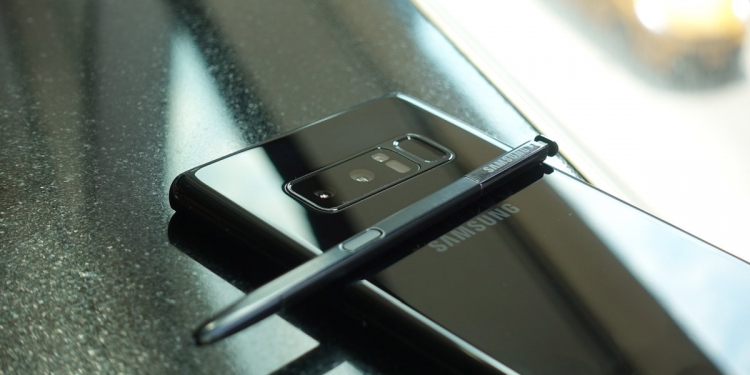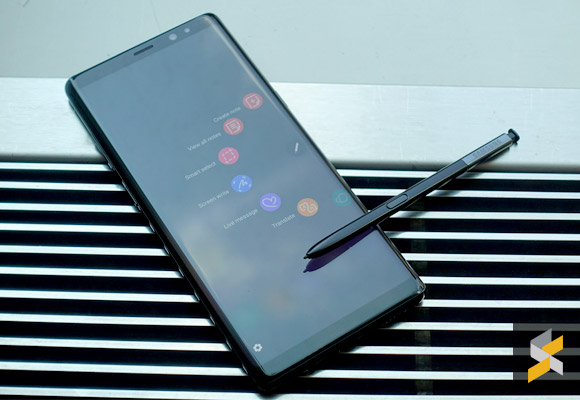Samsung had a rough time last year with the Galaxy Note7. After initiating massive recalls and efforts to inspire customer confidence, the Korean smartphone maker appears to be making a huge comeback with the Galaxy S8 and S8+. It was reported that Samsung had sold 15% more Galaxy S8 units compared to the Galaxy S7.
With a product gap of almost 2 years, Samsung has finally introduced its new Galaxy Note8. To make up for lost time, Samsung is doing more just than rehashing its current flagship with an extra stylus.
In terms of design, the Galaxy Note8 with a 6.3” screen looks like a bigger Galaxy S8+. It’s slightly taller, wider and thicker than its marginally smaller 6.2” Galaxy S8+. In the hand, it feels quite substantial as it tips the scales at 195g.
Just like the Note7, it has less rounded corners which result in a boxier looking appearance compared to the Galaxy S series. Build quality is top notch with the usual mix of metal and glass.
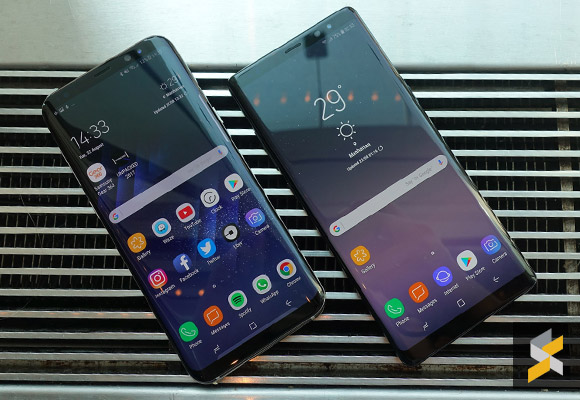
With an 18.5:9 QuadHD+ Infinity Display, Samsung has managed to fit a significantly larger screen than the Note7 (5.7” to 6.3”) while increasing its width by just a millimeter. You can hold it comfortably with a single hand but you would still need 2 hands to use it practically.
The Galaxy Note8 like the Galaxy S8 has one of the best screens on the smartphone right now. The colours are vibrant and it offers great contrast. By default, it still runs on Full HD+ resolution (2220×1080) for optimized power consumption but you can switch it to QuadHD+ (2960×1440) under settings.
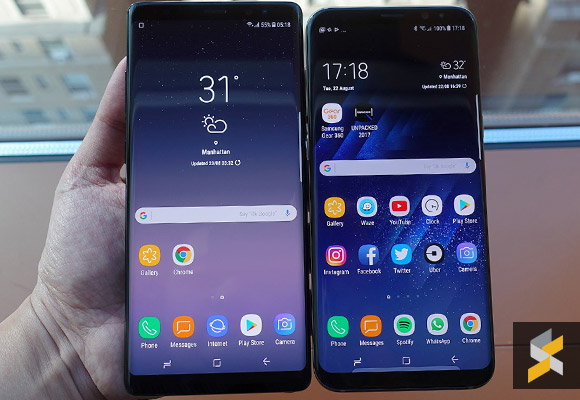
Under the hood, it runs on the same 10nm Exynos 8895 octa-core processor for our region but they have bumped up the RAM to 6GB for better multi-tasking. On board storage still starts at 64GB but now there’s a higher capacity option of 128GB and 256GB which would vary depending on each respective market. Good news is that storage is still expandable. However, it utilises a hybrid SIM tray design, which means you can’t use 2 SIMs if you’ve already inserted a microSD card.
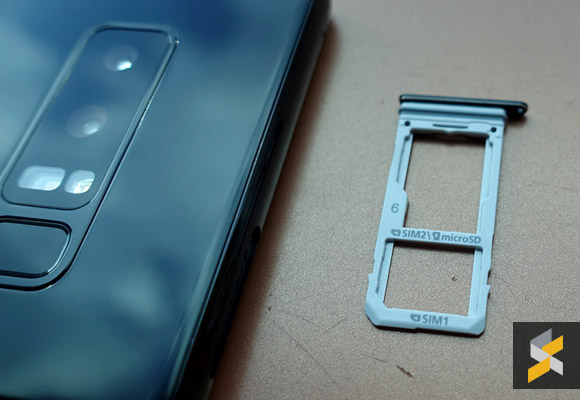
At the time of the announcement, the Galaxy Note8 still runs on Android 7.1.1 Nougat and you can expect Samsung to update this to the latest Oreo. Love it or hate it, it also gets Bixby plus you an extra button to summon your virtual assistant.
Probably to be on the safe side, the battery on the Galaxy Note8 is smaller at 3,300mAh capacity and it charges via USB Type-C. As a comparison, the former Note7 and the current Galaxy S8+ both come with a larger 3,500mAh battery. To ensure better reliability, Samsung assures that its new batteries have undergone an 8-point battery safety check which they claim to be the most rigorous in the industry.
[nextpage title=”Best dual-camera setup with zoom”]
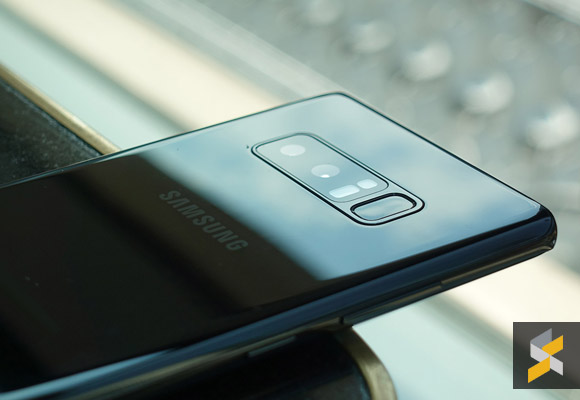
Samsung has been reluctant in releasing a dual-camera setup on their smartphones all these while. There are several ways of doing so, including RGB+Monochrome configuration or fitting a dedicated telephoto or wide-angle lens. Finally, the folks at Samsung figured that going with telephoto setup would be ideal choice moving forward. For the very first time, they have fitted a secondary lens that can do 2X optical zoom and it goes up to 10X in digital.
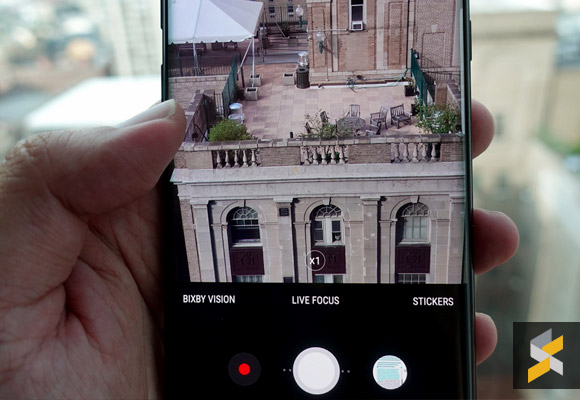
The middle camera is still your main shooter retaining a familiar 12MP dual-pixel AF camera with a fast f/1.7 lens. For the actual zooming, it gets a secondary 12MP AF camera with a f/2.4 aperture. Unlike other smartphones with 2X optical zoom, Samsung takes a step further by implementing OIS for both primary and secondary lens. This allows you to capture sharper images while zooming in. From our brief test, it manages to withstand our minor handshakes and OIS does make a difference.
Like the iPhone 7 Plus, the secondary lens for zoom doesn’t work all the time and it will only kick in with adequate lighting. In low-light situations, it will rely on the main 12MP f/1.7 shooter while applying digital zoom.
Overall, the camera’s hardware is great but Samsung could have done better with its software. Switch between original and zoom can sometimes get annoying. The UI features a familiar round button which lets you toggle between 2X or 1X zoom with a single tap. If you have a habit of tapping on the subject to focus before shooting, you’ll notice that the zoom button is replaced with the exposure level each time you tap. As a result, you would need to wait for about two seconds for this slider to change back to the zoom button. Why can’t Samsung have both zoom and exposure settings showing at the same time?
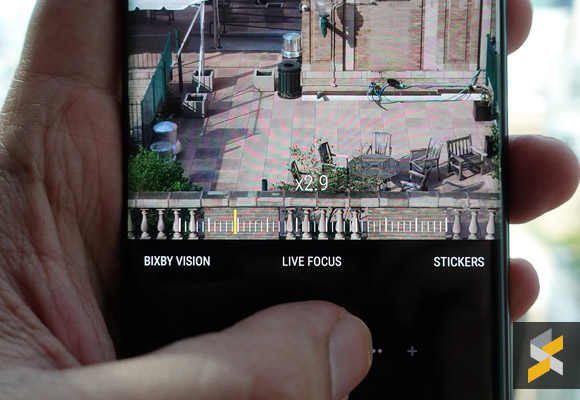
Of course, there’s another way to overcome that. The on-screen shutter button like the S8 can be dragged left or right with a single thumb to zoom in and out. This behaves like a focus-by-wire mechanism found on most point and shoot cameras. The problem with this is that the controls are not as accurate compared to the rotary interface that you get with the iPhone 7 Plus or ZenFone 3 Zoom. Luckily Samsung has retained pinch to zoom but that requires you to use both hands. On the bright side, these are just camera UI issues and we hope Samsung could improve these niggles with a software update.
As the answer to its competitor’s “portrait mode”, the Galaxy Note8 now comes with “Live Focus”. This replaces the old Selective Focus mode which is often hidden under its menus. Live Focus can be triggered easily on the main camera interface and it works best with a minimum distance of about 1.2 metres. Similar to portrait mode, you can adjust how much bokeh you wish to apply and you can preview the effect in real time.
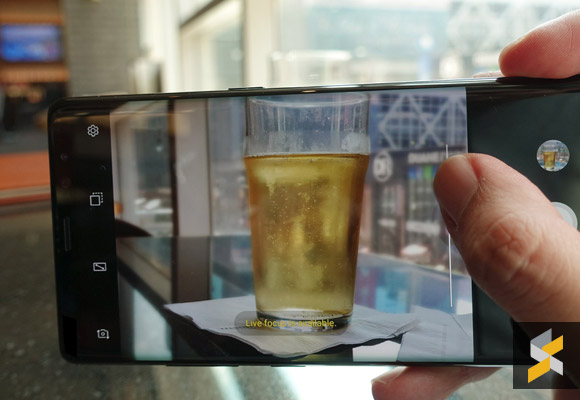
In our short trial of using it, getting Live Focus to work can be a hit and miss at first. You’ll need to have ideal lighting, the right distance and the right amount of “blur” to pull this off convincingly. It’s good thing that this feature lets you save the original non-zoom copy of the image and you can still edit the level of focus after the shot is taken. Even if you don’t plan on taking a “Portrait Mode” shot, you can use Live Focus to capture both wide-angle and telephoto shots simultaneously.
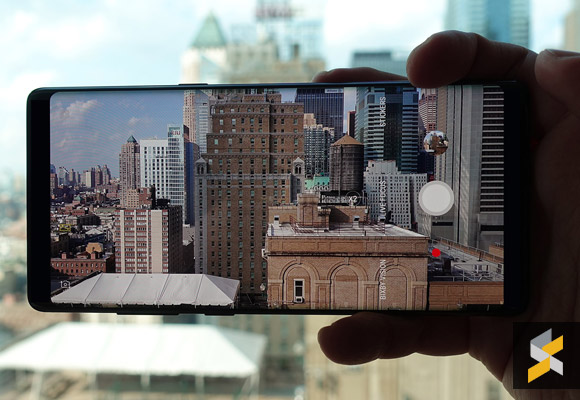
Another noteworthy addition on the camera interface is Full View mode. This toggles the image dimensions between 4032×3024 (12MP – 4:3 ) to 4032×1960 (8MP – 18.5:9) which maximises the display real estate of its Infinity Display.
Over at the front, the Note8 gets the same 8MP f/1.7 auto-focus front camera as the Galaxy S8. If the standard beautification features aren’t enough, you can also add on filters, stickers and masks for your selfie pics. The main camera at the rear shoots videos in 4K (3840×216) while the front camera tops out at QHD (2560×1440).
[nextpage title=”Big on productivity features”]
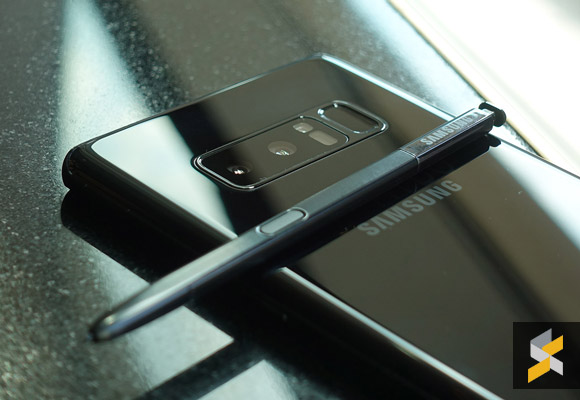
Of course, what is a Note without the S Pen? The former Galaxy Note7 was quite an improvement over the previous Galaxy Note5. The S Pen stylus on the Note7 had double the pressure sensitivity of its predecessor at 4,096 levels. It was also the first to introduce Always-on display and you can even pin your notes to show when the phone is in sleep mode.
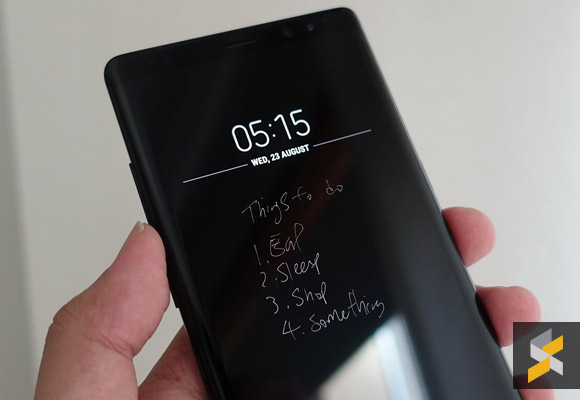
The Galaxy Note8 has taken all those features and cranked them up a notch. The screen-off memo which lets you jot down notes while the screen is off now supports up to 100 pages. You can also pin your notes up and make direct edits easily from the always-on display.
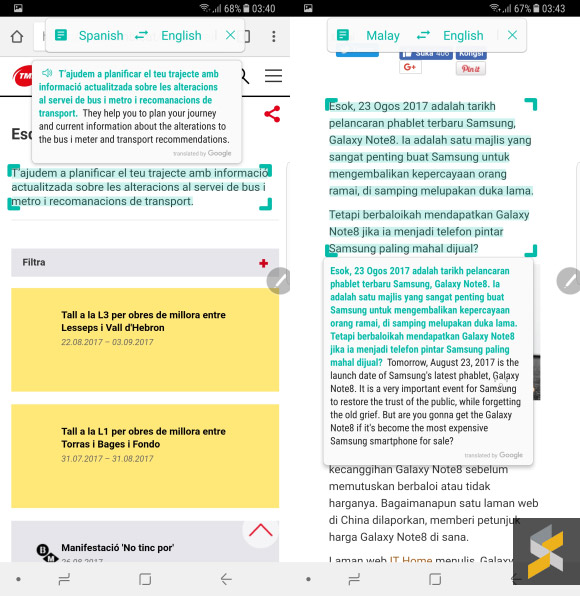
On the previous Note, you can get instant on-screen translations by simply hovering your S Pen over the word. Now you can perform the same translations for full sentences or even an entire paragraph.
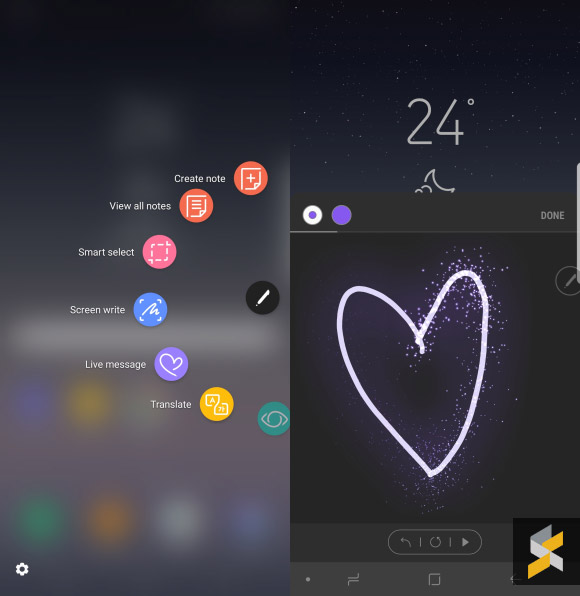
On the Note7, you can create animated GIF from any video and now they have included a new Live Memo which lets you record a short animation of your drawing. It’s kind of like Digital Touch on the Apple Watch but with more customisation.
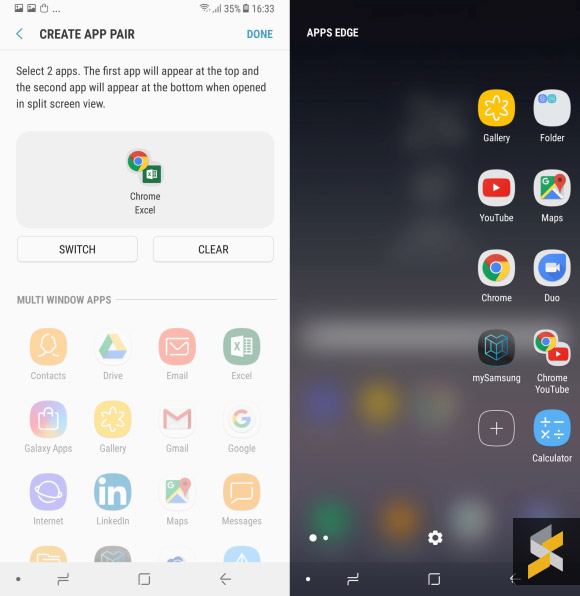
Since this is a dual-curve screen phone, Samsung has also improved its App Edge to support App Pairing. The Galaxy Note series is one of the first few phones to introduce multi-window and now it is even easier to load 2 of your favourite apps side by side. Like the name suggests, you can now preset your commonly used multi-window apps and have both launch immediately from the App Edge.
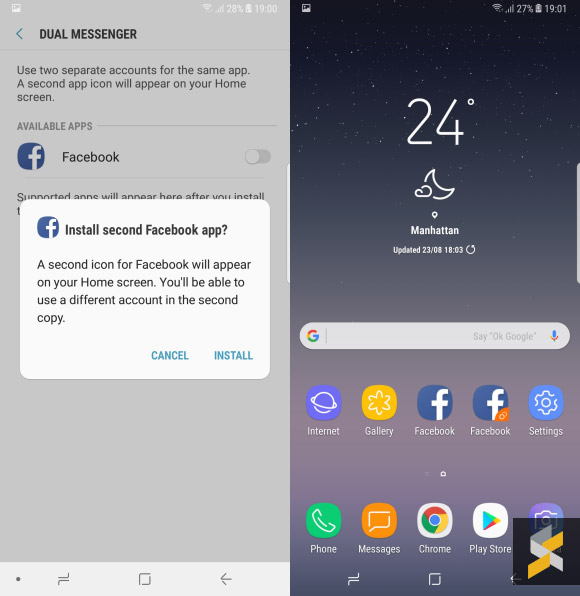
Another nifty feature is Dual Messenger which lets you install two separate copies of your social apps on the same phone. It was first introduced on the new Galaxy J series for 2017 and it supports Facebook, WhatsApp, FB Messenger, Skype and more. This would be perfect for those who handle multiple social media accounts especially for apps that don’t support multi-logins like Twitter or Instagram.
[nextpage title=”The Note worth waiting for”]
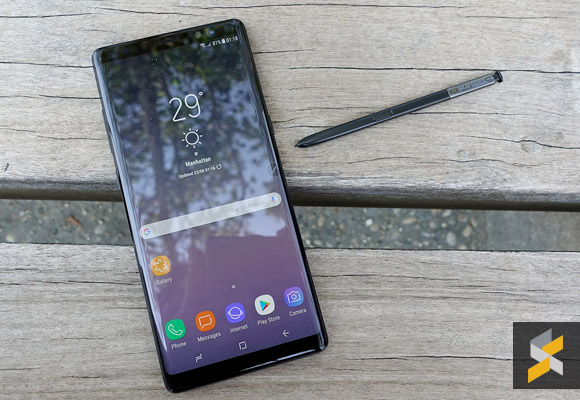
Overall, the Galaxy Note8 is a well-deserved upgrade for existing Galaxy Note owners. It’s more than just a bigger S8+ with an S Pen. The dual-cameras at the rear is probably the best right now and having OIS for both cameras is a huge advantage. As mentioned earlier, there are several kinks which we hope that Samsung could address through a software update.
For the creators and multi-taskers, you’ll appreciate the S Pen that’s now improved with more useful features. Like any flagship Samsung device, it still retains an IP68 dust/water resistance, fast wireless charging and an Iris scanner in front. We had hoped that Samsung might introduce an embedded fingerprint sensor on the display which would make it easier to unlock while the device is laying down. Unfortunately, this might only debut on a newer model sometime next year. While I’m not a big fan of this odd camera module design, the Note8 is somewhat an improvement as the fingerprint sensor is now separated further from the camera with a heart rate sensor placed in between. In all black colour, the module blends in quite well but it might stand out like a sore thumb with lighter colours.
The biggest concern of course, is its pricing. The Malaysian pricing has yet to be announced but we can safely say that the Galaxy Note8 would be their most expensive model yet. With the new hardware upgrades and additional features, its extra premium over the Galaxy S8+ is somewhat justified. Samsung Malaysia is likely to offer another round of pre-order promotions to add substantial value to the overall ownership experience. One thing for sure, there’s no other device on the market right now that can be as productive as the Galaxy Note8.
UPDATE: Samsung Galaxy Note8 is officially priced at RM3,999. Pre-order starts on 5 September with RM888 worth of rebates/savings. For Malaysia, the Galaxy Note8 will be available in Midnight Black, Orchid Gray and Maple Gold.

